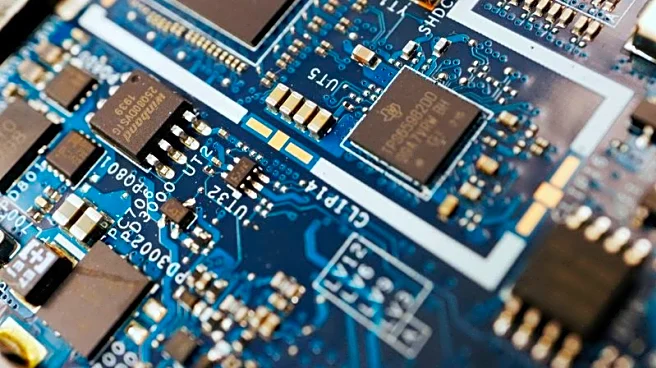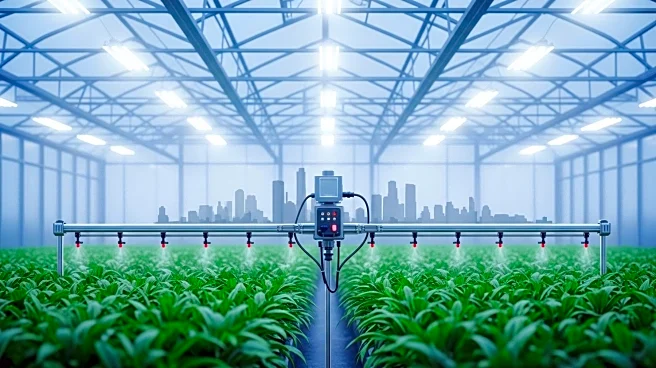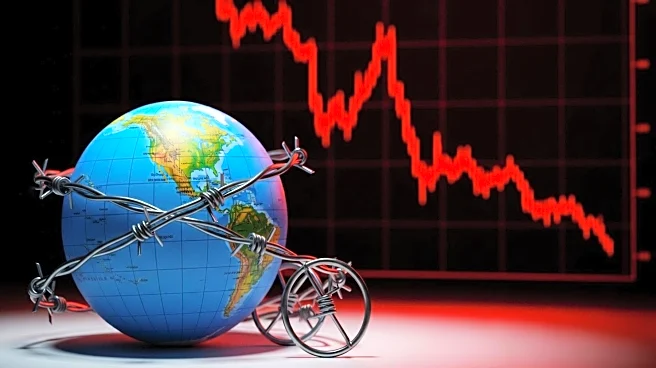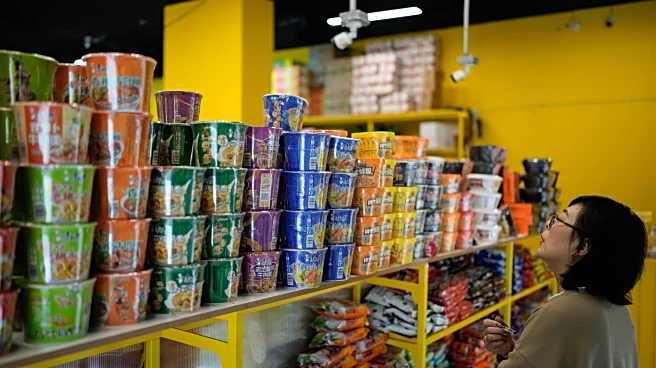What's Happening?
Investment banker Sarthak Ahuja has challenged the perception that India is weak in manufacturing, particularly when compared to China. In a LinkedIn post, Ahuja detailed India's growing strength in industries such as electronics, defense, renewable energy, and pharmaceuticals. He noted that India has become the second-largest manufacturer of mobile phones, with exports reaching over $30 billion annually, a 132-fold increase over the past decade. In the pharmaceutical sector, India remains a significant exporter of medicines, with innovations like Nafithromycin and substantial investments in medical device manufacturing. The defense industry has seen domestic production triple to $15 billion, with 65% of equipment now made in India. Additionally, India is the third-largest manufacturer of wind and solar power equipment, with initiatives like the Suryaghar Muft Bijli Yojana lighting up over 1.5 million homes.
Why It's Important?
The developments highlighted by Ahuja underscore India's potential to become a major player in global manufacturing, which could have significant implications for its economy and international trade relations. The growth in mobile phone manufacturing and pharmaceuticals positions India as a competitive exporter, potentially increasing its influence in these markets. The advancements in defense production and renewable energy reflect strategic gains in self-reliance and sustainability, which are crucial for national security and environmental goals. These sectors' growth could attract foreign investment and create jobs, contributing to economic development. However, challenges remain, such as the need for deeper integration in the supply chain to reduce dependency on imports for high-value components.
What's Next?
India's manufacturing sector is likely to continue expanding, driven by government policies and investments aimed at boosting production capabilities. Stakeholders may focus on addressing supply chain gaps, particularly in high-value components like chips and batteries, to enhance self-sufficiency. The government may also seek to strengthen trade partnerships and attract foreign investment to support this growth. As India builds on its manufacturing foundation, it could see increased competition with other manufacturing giants, necessitating strategic planning and innovation to maintain its upward trajectory.
Beyond the Headlines
India's manufacturing growth reflects broader economic and cultural shifts, including increased emphasis on self-reliance and innovation. The country's ability to produce and export a diverse range of products, from toys to advanced medical devices, highlights its evolving industrial landscape. This growth may also influence global perceptions of India, challenging stereotypes and showcasing its capabilities. As India continues to develop its manufacturing sector, it may face ethical and environmental considerations, such as ensuring sustainable practices and equitable growth across regions.












